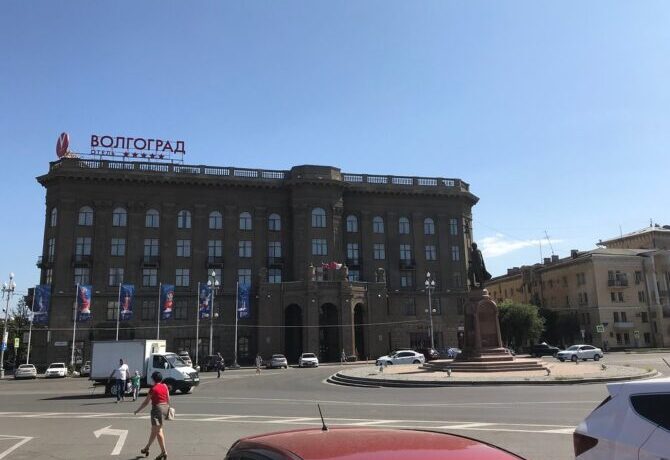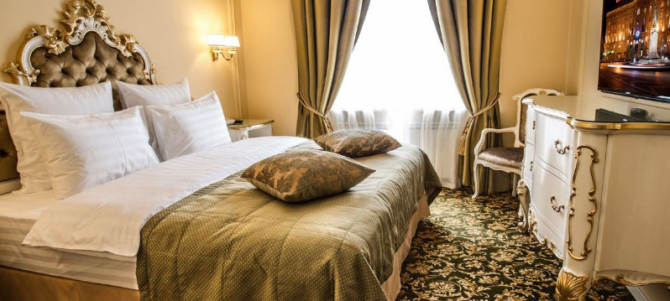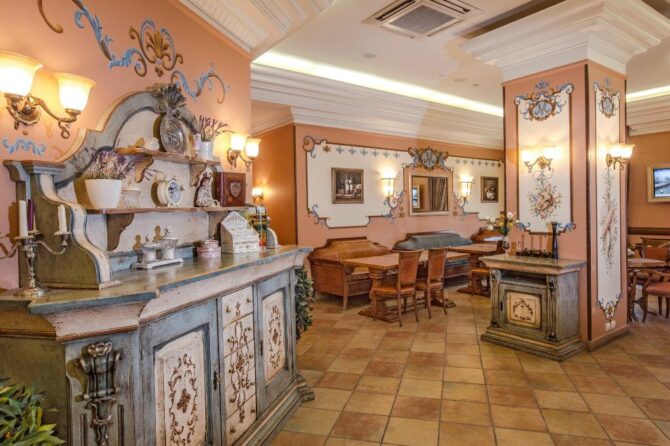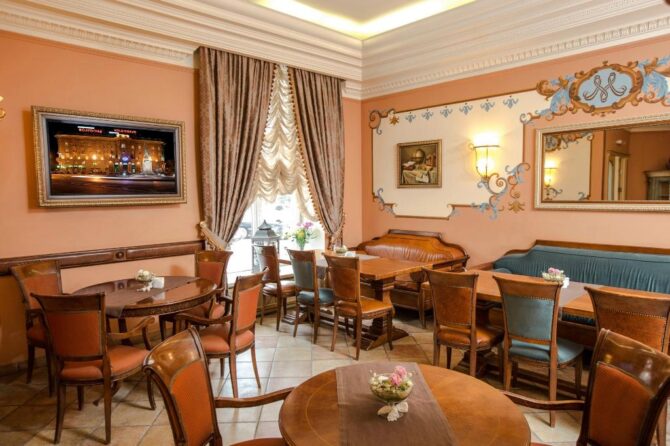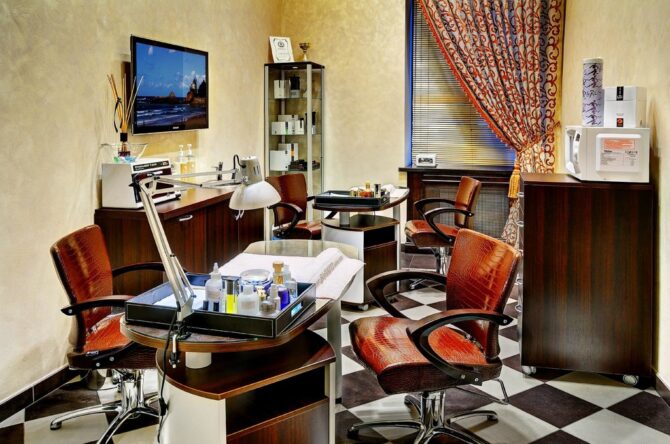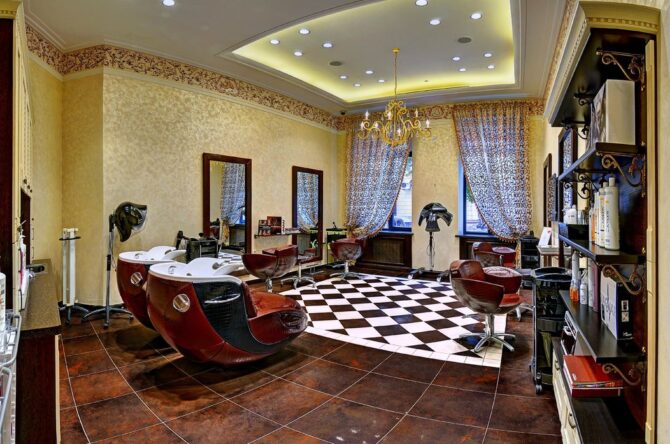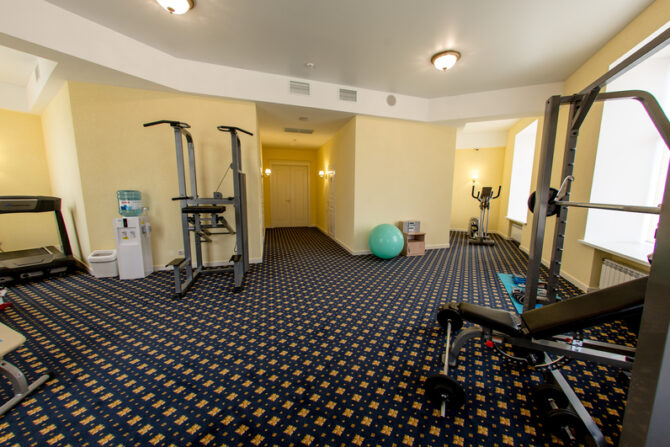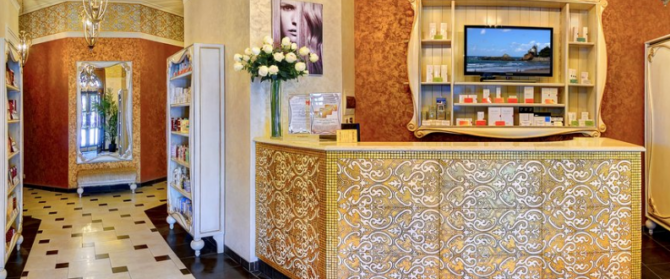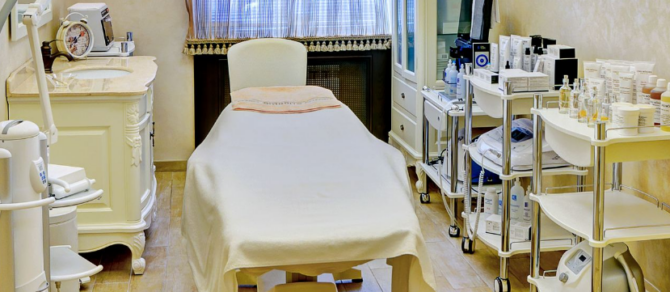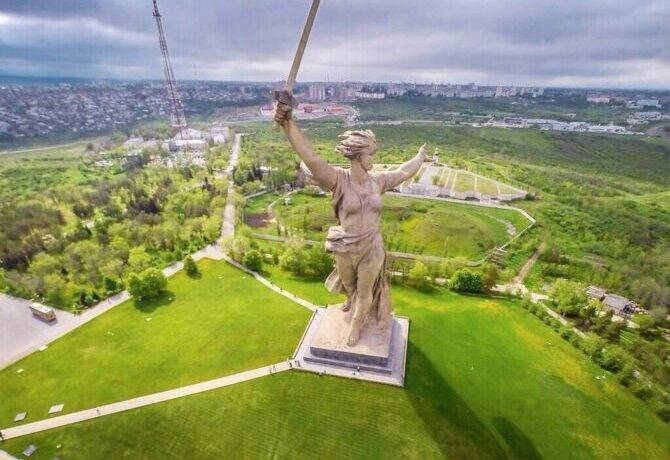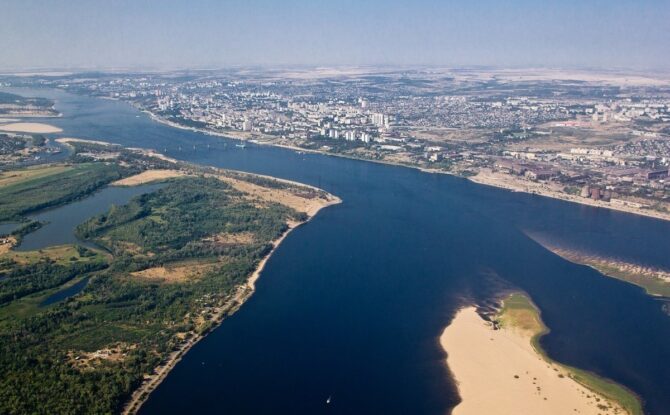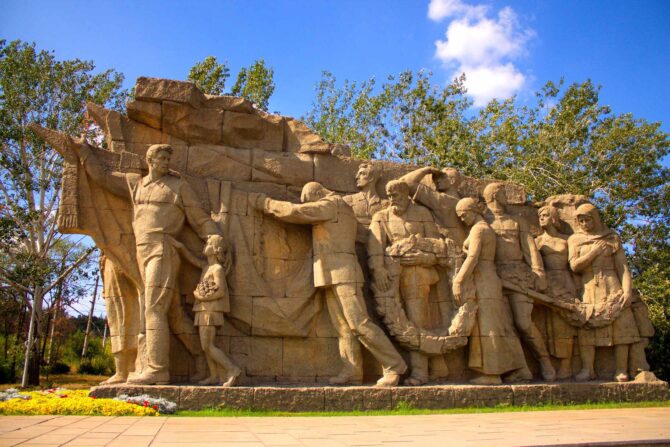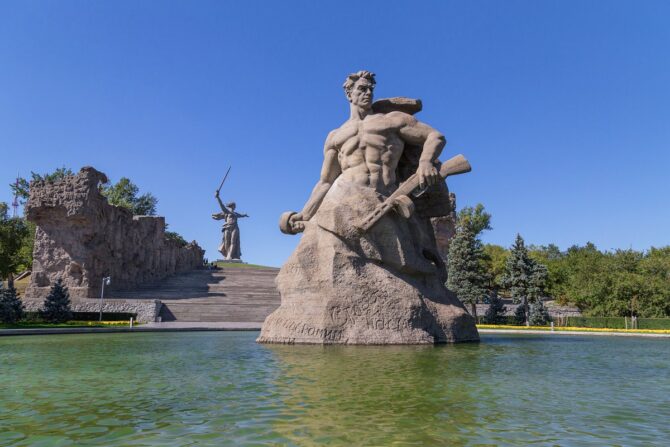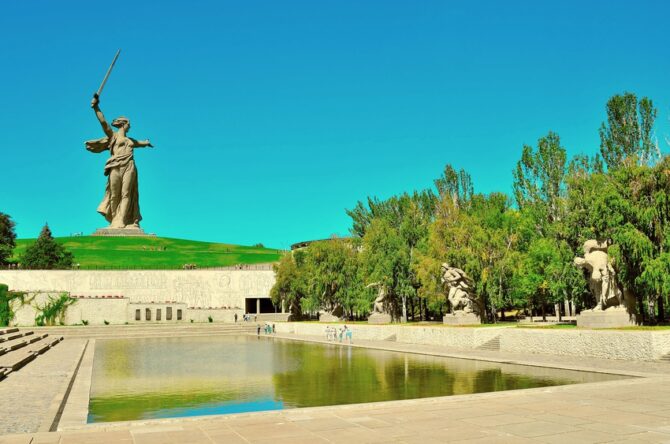Hotel Volgograd is located in the center of the city of the same name in a majestic five-story building with a hundred years of history. Today the hotel accepts guests in rooms with fresh renovation, comfortable furniture and modern plumbing. The history of the building is very interesting and entertaining, the walls of the hotel are saturated with the spirit of the time, they remember merchant conversations over a glass of wine, and thousands of transactions for the sale of caviar and sturgeon, and revolutionary fires, and nostalgia of the Soviet era, and even wartime.
Hotel overview Volgograd on map
History and location
The three-storey building in the center of Tsaritsyn, as Volgograd was called before the revolution, was built by the merchant of the first guild Vasily Voronin. Voronin was well known in the city, the merchant had considerable weight in certain circles, had huge capitals for those times. Merchants from all over Russia came to Tsaritsyn for the gifts of the Volga – sturgeon varieties of fish, caviar, beluga. The inns did not accommodate all comers, so the merchant Voronin in 1890 gave the city what was needed – a hotel on the central Alexander Square, consisting of 75 rooms. The building also housed a restaurant and later a theatre.
The first name of the hotel is Capital Rooms. The people quickly dropped the second word in the name and the hotel became simply Capital. In 1895, the restaurant at the hotel became the exchange of tsaritsyn merchants, at tables with starched tablecloths, large sales of river gifts were made, and success was consolidated by the joint drinking of strong drinks. The background was French singers and well-trained waiters.
After the trading affairs, the merchant soul demanded spectacles, so the Buff Theater was always full. The glory of modern productions on the topic of the day spread far beyond the city, and at masquerade balls there were not only merchants, but also the nobility with the aristocracy. In terms of receptions and balls, the troupe of the theater had no equal. Several times a month, theater parties organized “themed parties” for the bored rich.
It’s been more than 20 years. Suddenly, a revolution and civil war came to Tsaritsyn. The hotel building houses the Extraordinary Regional Food Committee of the South of Russia and the editorial office of the newspaper “Soldier of the Revolution”. The committee was engaged in the procurement of ammunition and food for the Red Army. To loot the hotel did not give the arrival of I.V. Stalin and S. Ordzhonikidze, who came to the city to lead the revolutionary committee. Tsaritsyn was renamed Stalingrad, this name of the hero city is remembered by many for the Battle of Stalingrad, which turned the tide of the war.
The architecture of the building and the convenient layout was noted by Soviet figures, so after the civil war, another floor was moved to the hotel and given to the pilots. At the beginning of the Great Patriotic War, the building came under fire from German bombers, like several thousand other buildings in Stalingrad.
In 1948, the hotel rose from the ashes. The restoration ended in 1955, the new building housed the Hotel Stalingrad. In 1961, the city was renamed again, and the hotel began to bear the name Volgograd.
From the creation of the merchant Voronin remained the foundation, internal layout and some parts of the facade, but in general the building is designed in the style of Stalin’s Empire. The rooms have high ceilings, rooms and corridors have strict linear shapes, combined with elegant vaulted rounded arches, moderate stucco, columns and wide balconies.
Near the hotel there are several memorable places: a poplar who saw the war and miraculously survived, a monument to fallen soldiers, a department store, in the basement of which Field Marshal Paulus was captured.
During the existence of the hotel, celebrities of every time, pop stars, writers, politicians and theatrical talents stayed here.
In 2015, the hotel was renovated after renovation. The management carefully monitors the image of the hotel, follows the key values, among which is respect for history and traditions.
Hotel Volgograd is located in the heart of the city, from the windows of the rooms offers a beautiful view of the historical part of the city and the main attractions. All significant events, whether it is the City Day or the parade on Victory Day, take place almost at the walls of the hotel. The hotel can be reached both by car and by public transport, for example, a metro station is a 5-minute walk away. Entertainment centers, theaters, shops and restaurants of Volgograd are also in the immediate vicinity.
Marianna, Volgograd
Hotel Volgograd – the pride of our city. Modern service in a historic beautiful building, excellent restaurant and spa complex. All visitors who stay at the hotel, praise both the rooms and the kitchen. And my friends and I go to the spa. The gym there is also not bad.
The central hotel of the city offers not only accommodation in cozy rooms, but also holds mass events – presentations, briefings, seminars. For this purpose, the Volgograd Hotel has four conference rooms of different capacities.
The largest hall can accommodate up to 126 people, the congress hall is designed for 45 guests, and two small halls can accommodate 30 and 35 people. Venues for events are equipped with modern equipment and comfortable furniture.
The building, located in the city center, can not boast of a large parking lot or a territory for walking. But the hotel has a restaurant on the ground floor, as well as a modern SPA center.
Room stock
In 2015, the Volgograd Hotel was reconstructed, creating a hotel that meets international standards. The interiors of the rooms were designed by certified designers. They managed to create a unique style and comfort in the hotel, to convey the atmosphere of elegant antiquity. Guests of the hotel note the aesthetics, comfort and excellent service.
The Volgograd Hotel offers rooms and apartments of different capacity and comfort levels: from twins and studios to luxurious suites and suites. decorated in a unique author’s design.
Igor and Ulyana, Balashikha
I liked the excellent service, there is no desire to cash in on everything, it pleases. We checked in with a child and a small Spitz, they did not demand a surcharge from us. Parking along the hotel under video surveillance, although not guarded. Near the park where you can walk. When we arrived, there was a repair of the facade, but it did not cause us any inconvenience. Breakfast is good, a lot of dishes to choose from, liked even a capricious daughter. If we go to Volgograd again, we will definitely stay here.
Each room has Internet access, multi-channel TV system, air conditioning, mini-bar, safe and tea drinking facilities. Rooms are decorated with exclusive natural wood furniture made in Italy. The beds are equipped with orthopedic mattresses, fresh linen, comfortable pillows and blankets.
Accommodation for children under 12 years old and small animals is free, if necessary, you can order an extra bed – a euro-folding bed for 1200 rubles per day.
Each guest is invited to a free breakfast in the restaurant from 7 to 10 am. The cost of using the fitness centre is also included in the price. Services of the SPA complex are paid separately.
Restaurant MOLIERE
On the ground floor of the hotel there is a restaurant Moliere. The chef of the restaurant offers guests an author’s menu, including dishes of Russian and European cuisine. A buffet breakfast with a wide variety of dishes, freshly brewed premium coffee and homemade cakes is served daily in the restaurant. At early check-out, you can take breakfast with you in the lunch box, warning the hotel staff the day before.
Beauty Resort BIARRITZ
The hotel has a SPA complex Biarritz, offering cosmetic procedures, relaxing massage, services of professional hairdressers and make-up artists.
There is also a sauna complex with a Finnish sauna and swimming pools. Guests of the hotel note the high level of professionalism of the masters and a cozy atmosphere.
The main attractions of the city
Volgograd is only four centuries old, but there is hardly a person who does not know about this city of the Lower Volga region. Volgograd has become an insurmountable obstacle to fascism and a place of heroic feat of our fellow citizens. The sculpture Motherland, calling for the protection of the country, is familiar to every former schoolboy. The Volga River, on which the city stands, is also known far beyond the borders of our country.
The memorial to the fallen soldiers is located in the city center, on the right bank of the Volga. It was this place that became the border that the German invaders could not pass. Fierce battles for the height of 102.0 were fought for almost six months – from September 1942 to January 1943. If the Nazis had managed to occupy this height, Stalingrad would have been lost. But the winter helped out, which the German troops endured much worse than the Russian Red Army. The mound is literally soaked in the blood of soldiers, so it was here that a memorial to the “Heroes of the Battle of Stalingrad” was erected.
In the center of the composition there is a huge sculpture “Motherland Calls!”, Next to it are the Square of Those Who Stood to Death, the Hall of Military Glory with the Eternal Flame, the Walls-Ruins, the Square of Heroes and the Square of Sorrow. Here, on Mamayev Kurgan, mass graves remained, where more than 35 thousand heroes of the defenders of the motherland rest.
The Battle of Stalingrad lasted two hundred days, so a granite staircase of 200 steps leads to the top of the mound.
The dominant central element of the complex remains the Motherland, which the locals affectionately call Mother. A woman with a face distorted from a scream, holding a sword in her raised hand, symbolizes the Motherland, leading a soldier into battle. The sculpture of Yevgeny Vuchetich is not only the personification of the strength and courage of the Russian people, but also a complex engineering object. Hollow inside the 85-meter sculpture weighs 8 thousand tons, a 33-meter sword weighs 14 tons. From destruction, the sculpture is protected by steel ropes, and sensors monitor the vibrations.
For several decades of the sculpture’s existence, natural conditions caused it some damage, but the grandeur and dynamics of the monument remained the same. The sculpture still attracts the eyes and does not leave anyone indifferent.
Also on Mamayev Kurgan a temple was erected, the opening and consecration of which was timed to the 60th anniversary of the Battle of Stalingrad. The Church of All Saints is decorated with icons of great Orthodox soldiers: Alexander Nevsky, Dmitry Donskoy and John the Warrior. Another part of the memorial complex is the Museum-Panorama “Battle of Stalingrad”.
Eight halls of the museum are devoted to the detailed reconstruction of all stages of the Battle of Stalingrad. The expositions include military paraphernalia of the time, equipment and weapons, photographs and documents. The main exhibit of the museum is a huge panoramic painting “The Defeat of the German Fascist Troops at Stalingrad”, which was written for almost 30 years and became the largest battle canvas in the USSR.


